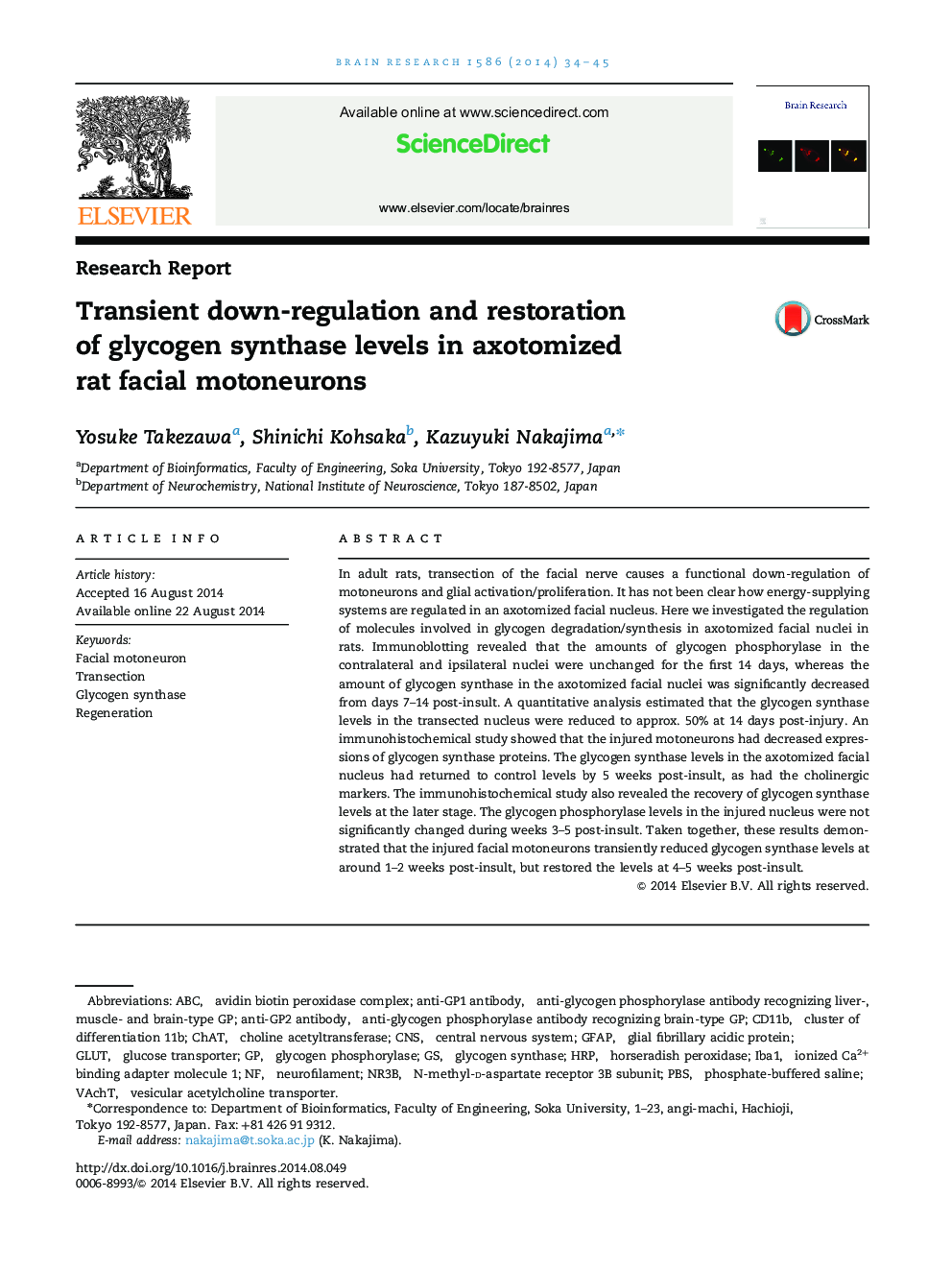| Article ID | Journal | Published Year | Pages | File Type |
|---|---|---|---|---|
| 6263234 | Brain Research | 2014 | 12 Pages |
â¢The glycogen synthase levels in facial nucleus declined at 1-2 weeks post-insult.â¢The injured facial motoneurons reduced the glycogen synthase levels.â¢The motoneurons restored the glycogen synthase levels at 4-5 weeks post-insult.
In adult rats, transection of the facial nerve causes a functional down-regulation of motoneurons and glial activation/proliferation. It has not been clear how energy-supplying systems are regulated in an axotomized facial nucleus. Here we investigated the regulation of molecules involved in glycogen degradation/synthesis in axotomized facial nuclei in rats. Immunoblotting revealed that the amounts of glycogen phosphorylase in the contralateral and ipsilateral nuclei were unchanged for the first 14 days, whereas the amount of glycogen synthase in the axotomized facial nuclei was significantly decreased from days 7-14 post-insult. A quantitative analysis estimated that the glycogen synthase levels in the transected nucleus were reduced to approx. 50% at 14 days post-injury. An immunohistochemical study showed that the injured motoneurons had decreased expressions of glycogen synthase proteins. The glycogen synthase levels in the axotomized facial nucleus had returned to control levels by 5 weeks post-insult, as had the cholinergic markers. The immunohistochemical study also revealed the recovery of glycogen synthase levels at the later stage. The glycogen phosphorylase levels in the injured nucleus were not significantly changed during weeks 3-5 post-insult. Taken together, these results demonstrated that the injured facial motoneurons transiently reduced glycogen synthase levels at around 1-2 weeks post-insult, but restored the levels at 4-5 weeks post-insult.
